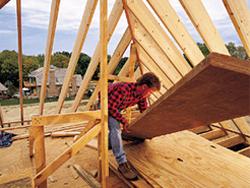Builder Confidence Unchanged
The November HMI held even with October’s upwardly revised reading, its lowest point since the series began in January 1985.
“Consistent with what builders said in last month’s survey, many are reporting that their special sales incentives are having limited success in terms of getting buyers in the door,” said NAHB President Brian Catalde, a home builder from
“To be more specific,” Catalde said, “builders are worried that the national media has tended to report negative housing stories as if there is one real estate market, when, in fact, there is no such thing – all housing markets are local. As a result, some healthy markets are being unfairly impacted by this negative media coverage.”
“The message from today’s report is that builders do not see any significant change in housing market conditions as compared to last month,” said NAHB Chief Economist David Seiders. “While they continue to work down inventories of unsold homes and reposition themselves for the market’s eventual recovery, they realize it will be some time before market conditions support an upswing in building activity – most likely by the second half of 2008.”
Derived from a monthly survey that NAHB has been conducting for more than 20 years, the NAHB/Wells Fargo HMI gauges builder perceptions of current single-family home sales and sales expectations for the next six months as either “good,” “fair” or “poor.” The survey also asks builders to rate traffic of prospective buyers as either “high to very high,” “average” or “low to very low.”
